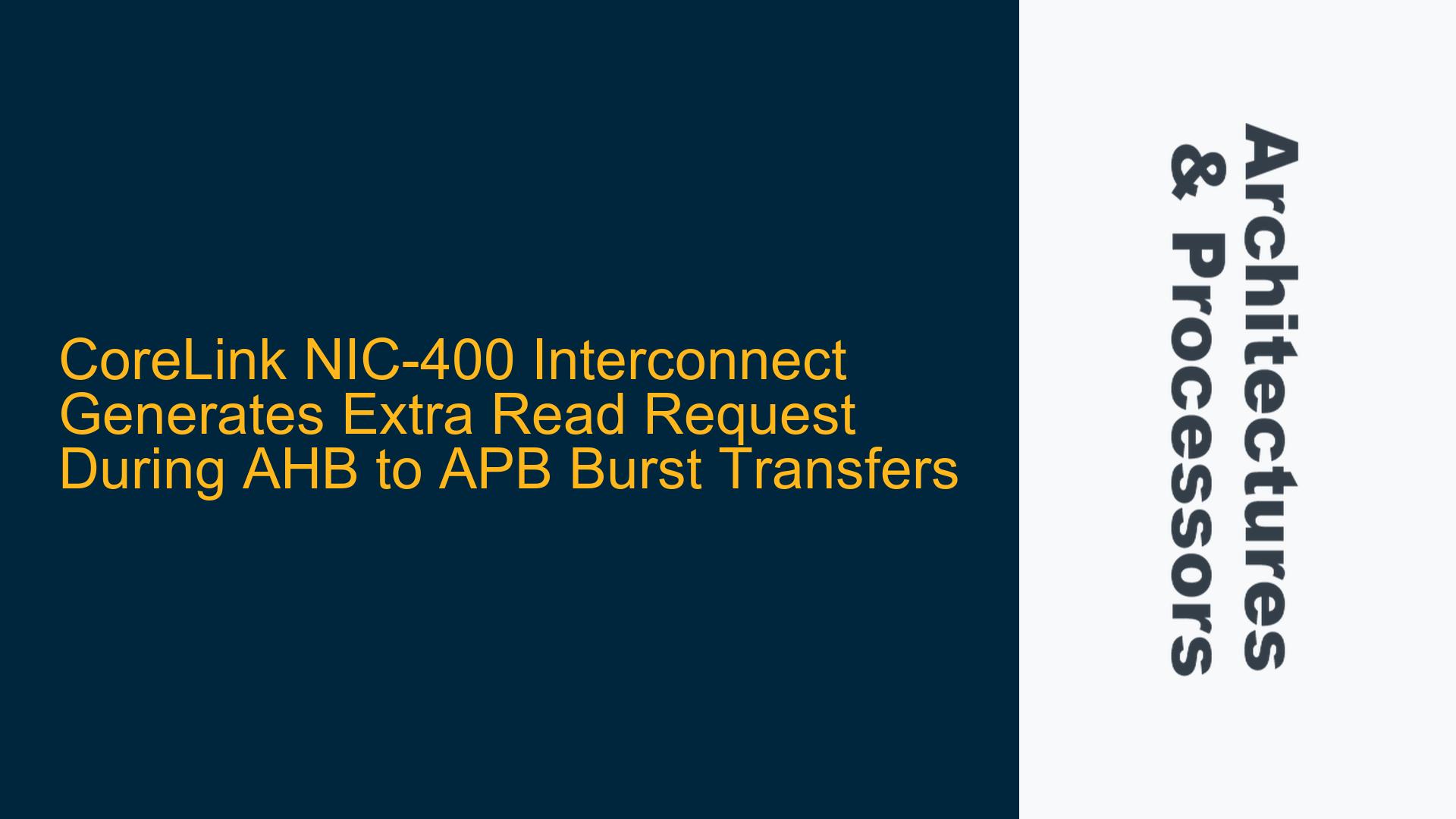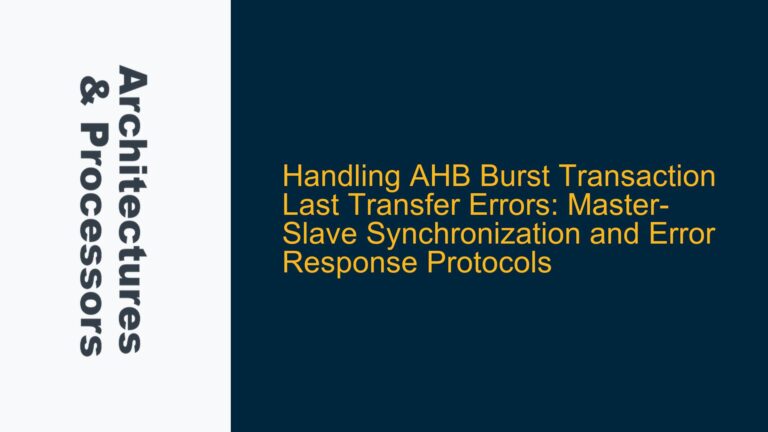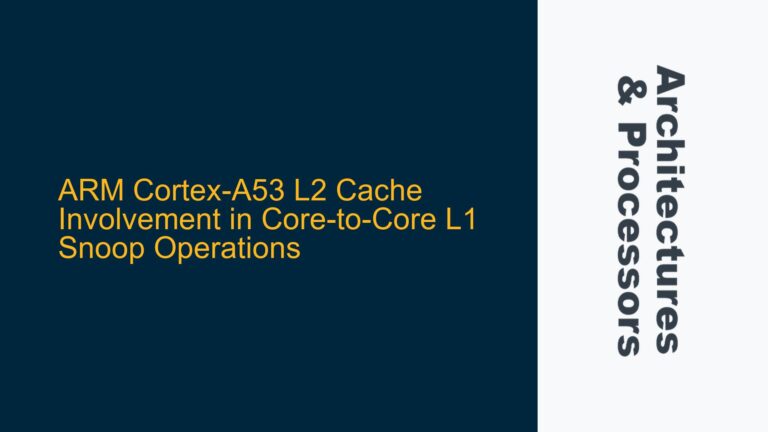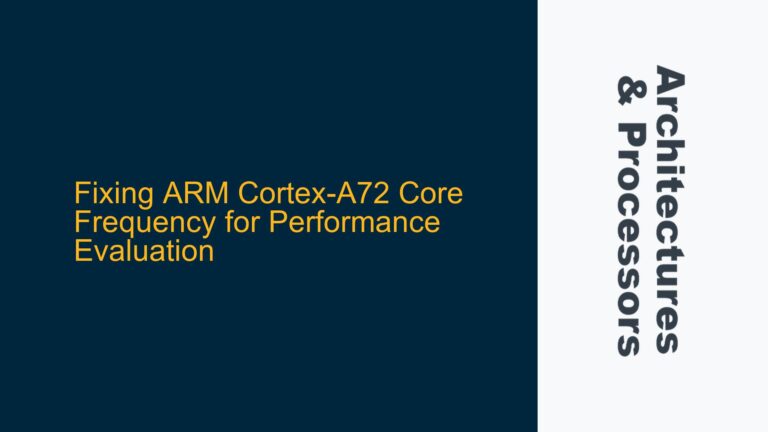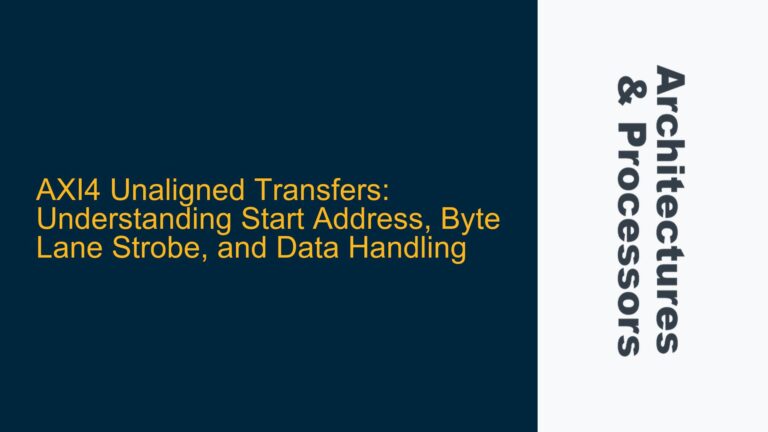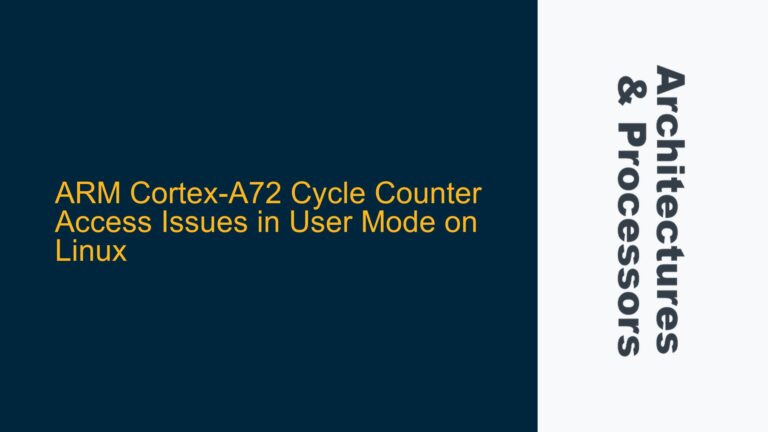AHB to APB Burst Transfer Issue with Extra Read Request
The CoreLink NIC-400 Interconnect is a highly configurable network interconnect designed to facilitate communication between multiple masters and slaves in an ARM-based SoC. In this scenario, an AHB-lite master is attempting to perform a burst transfer to an APB slave through the NIC-400 Interconnect. The expected behavior is for the NIC-400 to translate the AHB burst transaction into a series of individual APB transfers. However, an unexpected extra read request is observed during the transfer, particularly when the burst type is set to WRAP16, INCR16, WRAP8, INCR8, WRAP4, or INCR4. Single-type transactions, on the other hand, work as expected.
The issue manifests as an additional read request being generated by the NIC-400 Interconnect, resulting in 17 transfers instead of the expected 16 for a WRAP16 burst. This behavior is inconsistent with the AHB protocol specification, which defines the number of transfers for each burst type. The extra read request can lead to incorrect data being read, potential memory corruption, and unexpected system behavior. The problem is particularly critical in systems where precise timing and data integrity are paramount, such as in real-time embedded systems or safety-critical applications.
The waveform provided in the discussion shows the extra read request occurring at the end of the burst sequence. This suggests that the NIC-400 Interconnect is not correctly handling the termination of the burst transfer, leading to an additional transaction being initiated. The issue is reproducible across multiple burst types, indicating a systemic problem rather than an isolated edge case.
Misalignment Between AHB Burst Protocol and NIC-400 Configuration
The root cause of the extra read request lies in the misalignment between the AHB burst protocol and the configuration of the NIC-400 Interconnect. The AHB protocol defines specific rules for burst transfers, including the number of transfers and the address wrapping behavior. For example, a WRAP16 burst with a transfer size of 32 bits (Hsize = 2) should result in exactly 16 transfers. However, the NIC-400 Interconnect appears to be misinterpreting the burst termination condition, leading to an additional transfer being generated.
One possible cause is an incorrect configuration of the NIC-400 Interconnect’s burst handling logic. The NIC-400 relies on configuration parameters to correctly interpret and translate AHB burst transactions into APB transfers. If these parameters are not set correctly, the interconnect may fail to properly terminate the burst sequence, resulting in an extra read request. This could be due to a mismatch between the AHB master’s burst settings and the NIC-400’s configuration, or an error in the NIC-400’s internal state machine.
Another potential cause is a timing issue in the handshake between the AHB master and the NIC-400 Interconnect. The AHB protocol requires precise timing for the assertion and deassertion of control signals such as HREADY, HTRANS, and HBURST. If the NIC-400 Interconnect does not correctly interpret these signals, it may fail to terminate the burst sequence at the appropriate time, leading to an extra transfer. This could be exacerbated by clock domain crossing issues or delays in signal propagation within the interconnect.
A third possible cause is a bug or limitation in the NIC-400 Interconnect’s handling of wrap bursts. Wrap bursts require the address to wrap around at specific boundaries, which can complicate the interconnect’s address calculation logic. If the NIC-400 does not correctly handle the address wrapping behavior, it may generate an extra transfer to complete the burst sequence. This could be due to an error in the interconnect’s address calculation logic or an oversight in the design of the wrap burst handling mechanism.
Resolving the Extra Read Request Through Configuration and Verification
To address the issue of the extra read request, a systematic approach is required to identify and resolve the root cause. The first step is to verify the configuration of the NIC-400 Interconnect to ensure that it is correctly set up to handle AHB burst transactions. This includes checking the burst type, transfer size, and address wrapping parameters in the NIC-400’s configuration registers. Any discrepancies between the AHB master’s settings and the NIC-400’s configuration should be corrected.
The next step is to analyze the timing of the control signals between the AHB master and the NIC-400 Interconnect. This can be done using simulation tools to capture and inspect the waveform of the transaction. Special attention should be paid to the timing of the HREADY, HTRANS, and HBURST signals to ensure that they are being asserted and deasserted at the correct times. Any timing violations or delays should be addressed by adjusting the clock domain crossing logic or optimizing the signal propagation paths within the interconnect.
If the issue persists, it may be necessary to investigate the NIC-400 Interconnect’s internal state machine and address calculation logic. This can be done by reviewing the RTL code and simulation logs to identify any errors or inefficiencies in the burst handling logic. Any bugs or limitations in the design should be corrected, and the updated RTL code should be thoroughly verified using a comprehensive testbench that covers all possible burst types and transfer sizes.
In addition to these steps, it is recommended to consult the ARM Technical Reference Manual (TRM) for the NIC-400 Interconnect to ensure that the design and configuration are in compliance with the specified requirements. The TRM provides detailed information on the interconnect’s operation, including the handling of burst transactions and the configuration parameters that control its behavior. Any deviations from the TRM should be addressed to ensure that the NIC-400 Interconnect operates correctly.
Finally, it is important to perform extensive verification and testing to confirm that the issue has been resolved. This should include both simulation-based testing and hardware validation to ensure that the NIC-400 Interconnect behaves as expected under all conditions. The testbench should be updated to include corner cases and edge cases that may not have been covered in the initial verification effort. Any remaining issues should be addressed through further analysis and debugging.
By following these steps, the issue of the extra read request can be resolved, ensuring that the NIC-400 Interconnect correctly handles AHB burst transactions and maintains the integrity of the data transfer process. This will help to prevent potential system failures and ensure the reliable operation of the ARM-based SoC.
